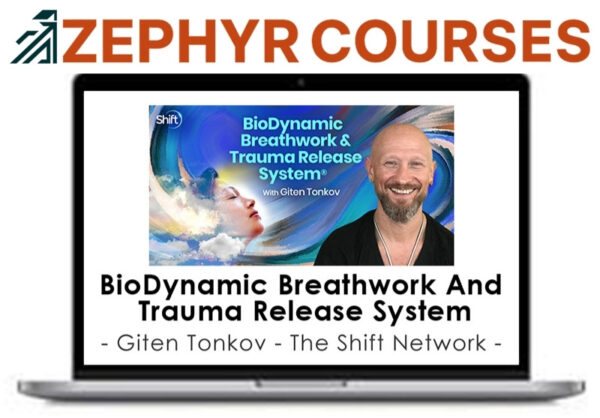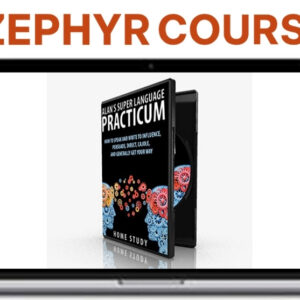Description
Understanding the Foundations of Biodynamic Breathwork
At its core, biodynamic breathwork blends conscious breathing techniques with elements of somatic therapy to address deeply held tension and trauma in the body.
You’ll find that this approach is grounded in clear breathwork principles, focusing on increasing awareness of your breath and bodily sensations. By tuning into your breath, you start to notice patterns where you unconsciously hold stress or emotional pain.
These gentle yet intentional breathing practices help you access layers of stored trauma, providing a pathway for trauma healing without forcing or retraumatizing yourself.
Biodynamic breathwork emphasizes safety and self-regulation, empowering you to release what your body is ready to let go of.
Understanding these foundations lets you approach healing in an embodied, compassionate way, using your breath as a powerful tool.
How the Trauma Release System Works in Practice
When you engage with the trauma release system in practice, you’ll move through a series of guided breath cycles combined with focused bodywork and mindful movement.
You’ll use specific breathwork techniques to access and release tension that’s stored in your body. As you breathe deeply and consciously, you might notice physical sensations or emotions surfacing. Instead of suppressing these responses, you’re encouraged to witness and gently move through them.
The facilitator may guide you to vocalize, shake, or stretch, supporting trauma integration at a somatic level. Each session creates a safe space for you to reconnect with your body’s natural rhythms.
Over time, you’ll learn how to recognize and release old patterns, facilitating deeper self-awareness and a sense of inner safety.
Benefits and Real-Life Experiences With Giten Tonkov’S Approach
Stories of transformation often emerge from those who’ve experienced Giten Tonkov’s Biodynamic Breathwork and Trauma Release System firsthand.
As you commence on your own healing journeys, you’ll likely notice a deeper connection to your body, an increased sense of safety, and a newfound ability to process old emotions. Many people share that this approach helps break patterns rooted in trauma, leading to genuine personal transformations.
You may experience reduced anxiety, improved emotional regulation, and a greater capacity for joy. Participants often describe feeling lighter and more present in daily life.
Frequently Asked Questions
Are There Any Contraindications or Safety Concerns With Biodynamic Breathwork?
When practicing biodynamic breathwork, you should prioritize safety considerations and maintain strong contraindication awareness. If you have heart issues, epilepsy, psychiatric conditions, or are pregnant, consult your healthcare provider first to guarantee you’re practicing safely and appropriately.
How Do I Find a Certified Practitioner or Facilitator for This Method?
If you’re interested in finding practitioners or locating facilitators for this method, start by searching online directories, checking professional association websites, and reading reviews. Always verify credentials and ask about their experience to guarantee you choose a qualified facilitator.
Can This System Be Practiced Online or Only in Person?
You can access this system both in person and online. Many practitioners offer virtual sessions, so you don’t have to be physically present. Online accessibility makes it easy to join from anywhere and fit sessions into your schedule.
What Training or Certification Is Required to Teach This System?
To teach this system, you’ll need to meet specific certification requirements and teaching qualifications. You must complete approved training, demonstrate competency, and sometimes pass assessments. Make sure you follow all guidelines to guarantee ethical and effective instruction.
How Does Biodynamic Breathwork Compare to Other Breathwork Modalities?
When you compare breathwork techniques, focus on comparison factors like intensity, emotional depth, and integration methods. You’ll notice some modalities emphasize relaxation, while others, like biodynamic breathwork, use movement and somatic awareness to address trauma and foster healing.












 Amazing at Home – AI Business Summit 2023
Amazing at Home – AI Business Summit 2023  Advanced MMXM 2023
Advanced MMXM 2023  A. Thomas Perhacs – Ultimate Hypnotic Influence
A. Thomas Perhacs – Ultimate Hypnotic Influence  Aleric Heck – Alpha-AI YouTube Ads Course
Aleric Heck – Alpha-AI YouTube Ads Course  Annie Lalla – Heart Coach
Annie Lalla – Heart Coach  Aidan Booth & Steve Clayton – YouTube Money Equation
Aidan Booth & Steve Clayton – YouTube Money Equation  Agency Mavericks – The Growth Plan Method
Agency Mavericks – The Growth Plan Method  AdSkills – Agency
AdSkills – Agency